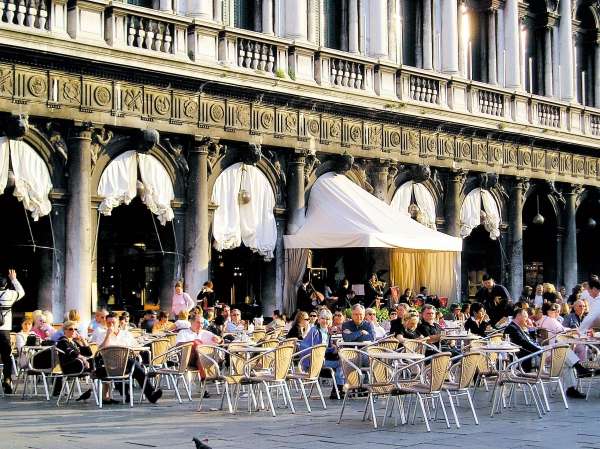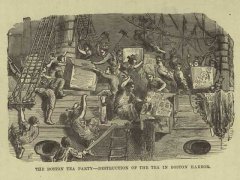Coffee culture what do you want to drink in a cup of coffee

Vienna is said to have more than 600 cafes, several of which are famous, such as Saher Cafe, Sperl Cafe, Hawelka, etc., but tourists prefer to go to Café Central, which has the most stories.
Enter the café and you are confronted with a statue of Adenberg, sitting in a chair with his hand on the coffee table. This writer wrote in this café, met Schnitzler, was recognized, and went to literature. However, today people are not familiar with his work, but most know the slogan-"I am not at home, I am in the café; if not in the café, I am on my way to the café." This sentence was originally a relationship between people and "coffee center", but it gradually evolved into a teacher's self-description of Adenberg. If there are any literary cafes in the world that are willing to put up a small blackboard in front of the door and write a famous saying in literary tones, then Adenberg is the initiator. He once wrote: "If you are depressed, whatever it is, go to the cafe!" You get only 400 kroner, but you're willing to spend 500 to go to a cafe! You hate the people around you and despise them, but you can't lack them. Go to the cafe!"
On Montsio Street in Barcelona, I found the Four Cats Cafe, where tourists stopped at the entrance to examine the little door and the poster of Ramón Casas, and a middle-aged woman guided them to their seats and gave a very brief account of the history of the cafe.
Many tourists come for Picasso. Picasso held his first exhibition at the cafe in 1899 at the age of 17, and his paintings were used as menu covers. In fact, the café was more closely related to Ramón Casas, a painter who had studied painting in Paris and came from a wealthy family who wanted to set up his own meeting place in Barcelona, along the lines of Le Chat Noir in Paris, with a business partner named Pere Roméu, who had worked as a waiter at Le Chat Noir and wanted to set up a good pub with affordable food and good music. Paris's "Black Cat" closed in 1897, before Picasso went there to see it, but Paris Montmartre, a bohemian tavern, was inherited in Barcelona. The "Four Cats" opened in June of that year. In addition to coffee, wine and food, Romeau believed that there was also a "spiritual element" here. His artist friends often sat together to discuss problems. In Spanish,"four cats" means three or five people. There have been architects such as Gaudi and musicians such as Isaac Albernis, but three or five friends may not be able to keep a pub running. Six years later,"four cats" are closed. Now reopened in 1978, the shop offers visitors a drink and a rest.
In Spanish, there are three main types of coffee: café solo is black coffee, café cortado is a little milk, café conleche is a lot of milk (Italian latte means milk), this is the origin of the so-called latte. It was not Italian or Spanish, however, but a Viennese named Kurkiewski, who had been a war hero against the Turkish Empire in 1683, rewarded by the city council with a sum of money and a house, as well as a large quantity of coffee seized from the Turkish army, so that he opened a cafe after the war, which in English meant Blue Bottle Cafe. He dressed himself in Turkish costume and mixed milk with coffee, boasting to his customers that although we had learned to drink this dark stuff from the Turks, they had no idea it could be mixed with milk. The Blue Bottle, which opened in 1686, must have been one of the first cafes in Europe. The cafe closed in 1694 after Kurkiski died, but he was still regarded as a hero by Viennese. There was a Kurkiski Festival every October. Viennese cafe owners would paste his portrait on the windows. Vienna now has a street named Kurkiski. There is a statue of him on the corner. I looked up Blue Bottle Cafe online in Vienna and found that an American businessman registered the name in 2002 and opened his store from California to New York, which may be the next Starbucks chain.
Important Notice :
前街咖啡 FrontStreet Coffee has moved to new addredd:
FrontStreet Coffee Address: 315,Donghua East Road,GuangZhou
Tel:020 38364473
- Prev

Coffee training Culture Coffee and the Story of celebrities
Coffee training Culture-Coffee and celebrities: many celebrities have an inextricable bond with coffee. The great German composer Yossebach not only likes coffee, but also advises others to drink it. But incredibly, he wrote an one-act musical comedy, the Coffee Chorus, about an elderly father who persuaded his daughter to quit drinking coffee. A great law.
- Next

Boutique Coffee Culture an important era in American Coffee History
Coffee training Culture: an important era in American Coffee History 1652-the first coffee shop opened in Britain, when the price of a cup of coffee was a penny; now the average American price of an Espresso-based coffee drink is $2.45; and in 1773-after the Boston Tea Party, the Continental Congress declared coffee the official national drink of the United States. Today, on average, every American
Related
- How did the Salvadoran coffee industry develop in Central America?
- What exactly does the golden cup extraction of coffee mean?
- The Origin of Coffee flower
- [2023 Starbucks World Earth Day] there are more meaningful things besides free Starbucks coffee!
- What kind of coffee is there in Spain? 9 Flavors of Spanish Coffee
- Aromatic African coffee| Kenya's coffee culture and historical production area
- Liberica Coffee Bean knowledge: the characteristics of Liberian Coffee beans of the three original species of Coffee beans
- The origin and formula of Spanish latte introduces the taste characteristics of Bombon coffee in Valencia, Spain.
- How to adjust the solution of over-extracted coffee
- What is the tasting period of coffee beans? What is the period of coffee and beans? How should coffee wake up and raise beans?

